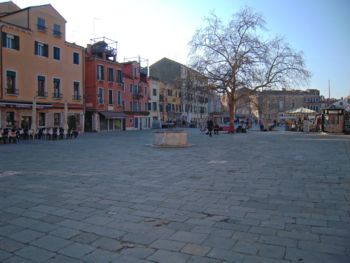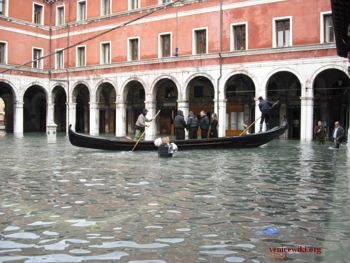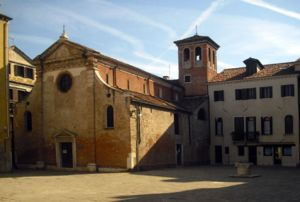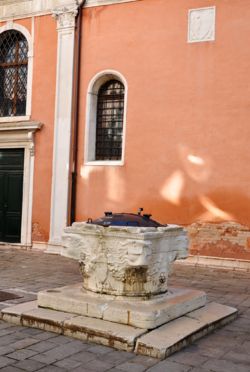Squares of Venice: Campo
Da Venicewiki, il wiki di Venezia
In these widenings boys meet after school to play, very often with the ball, even if the City Police Regulations it would prohibit the performance.
The definition Campo, (Field) is not accidental. Indeed in ancient times in these areas were cultivated vegetables as in any other country. Even the most distant from the Basilica di San Marco of St. Mark's Square was once a cultivated field. It was owned by the nuns of the Chiesa di San Zaccaria, divided by the square itself from Canale Botario. In the field grew fruit trees were planted and many crops.
The church, in most cases, puts the main façade jutting over the Rio, so that any function, Baptism, Marriage, Funeral, or the feast of the patron saint, allowed access from the main entrance to the guests that could arrive with their own private boats to the function.
Only with the arrival of Napoleon all the dead were buried far from home in an island not far from the city but at the same time not so close that you can create discomfort or infection at the Venetian people. The island, which is currently the cemetery Venetian, was composed of two distinct islands then divided by a small canal, the Isola di San Michele and the Isola di San Cristoforo.
The outer part, one that emerges from street level, the Wellheads, are only the terminal part of a complex construction made in such a way that the ingress of rainwater that falls to the ground enters the trapdoors, is filtered fine sand and remains trapped in this kind of tank by an envelope of clay, which did not allow either the output of fresh water and the taking of salt water.
To each well there was a manager who had to close every night the true, verify that no attacker could get dirty or even poison while during high waters had to dab the forine because drinking water does not pollute saltwater.
There are also many buildings they owned and still exist inside wells to private courts. The wells were collecting internal waters weather including that from the slopes of the roofs, which, through rain water drains, brought water in the courtyard and then into the well.
The builders of the palaces were aware of the function that the roofs had to collect water for the survival of the families who have inhabited the buildings, so they built the houses whereas they would not have had to waste of this precious resource. Were so constructed Gorne (downspouts) with slopes into the building to bring water from the well of the House.
In this way the main facades of the buildings are clean, no annoying queues vertical, without drips soiled and moistened the facades, while maintaining the lines of building and preserving the frescoes that often adorned the facades.



